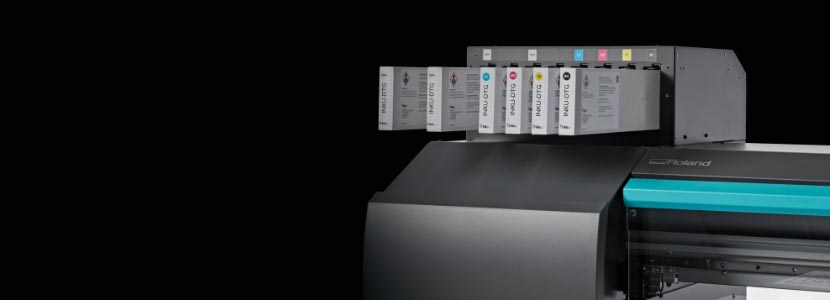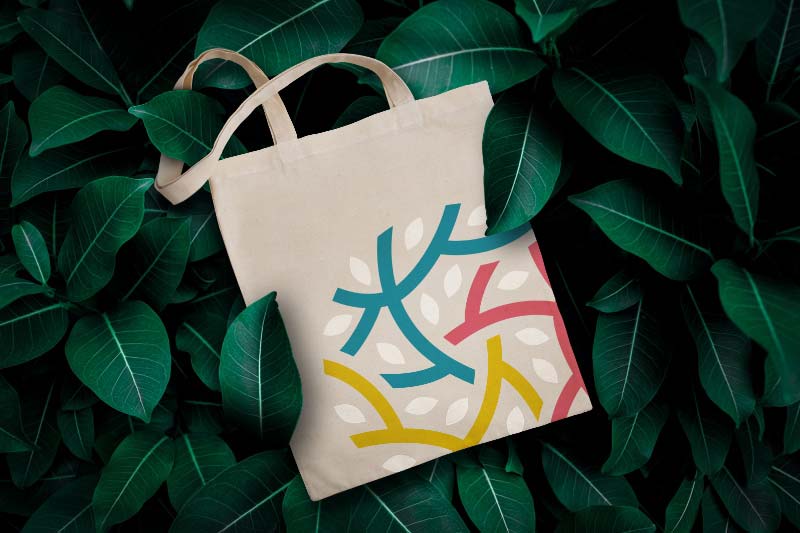We’re all doing our bit for the sake of the planet - cutting down on the energy we use, cutting out waste, reusing and recycling because we know it’s the right thing to do. For more and more of us, that means making careful choices about the products and services we buy – weighing up the green credentials of a brand before making a decision, whether it’s the car we drive or the coffee we drink.
Print customers are no different, and while providers are increasingly under pressure by law to operate sustainably, the influence of the conscientious consumer is stronger than ever.
The environmental challenge facing the textiles sector
For decades, the intense demands on the textiles sector for continuous mass production at speed meant that traditional print processes weren’t necessarily designed with energy saving or recycling in mind.
In today’s new world, the mass production model is at odds not only with the planet’s needs, but with strict global directives, and increasingly with our customers’– and our own - demands. In an era of energy-saving, on-demand and personalised manufacturing, what’s the scope of the problem facing the textiles sector, and what can we do?
In a recent FESPA article, traditional fabric printing is called out for the carbon footprint it leaves, and its manufacturing footprint fares no better: “A traditional rotary screen machine printing 12 colours at 3.6 metres wide, with a steam or gas dryer, automated colour kitchen and screen washing zone, will take over 5,000 square feet of factory space”. So, it’s not looking good.
And there’s more. Water and ink consumption – and their waste – is another issue. FESPA tells us that textile production consumes an estimated 79 billion cubic metres of fresh water annually, and is estimated to create around 20% of the world’s industrial water pollution.
The case for digital printing
When you look at the FESPA stats and compare them with a similar scenario using digital print technology, the case for digital printing is convincing. Instead of the 5,000 square feet or so needed in the traditional scenario above, a digital print machine, using the same components for a similar job, needs less than 400 square feet. And instead of 540 kilos of ink, a digital printer will use only 90 kilos for the same size print run. FESPA calculates that this “implies a water saving of 600% by the digital textile printer.”
Convincing stats, for sure, and if the above is a compelling case for digital, then there’s an equally convincing case for choosing Roland DG when it comes to the best devices to adopt.

How Roland DG digital textile printers help
Roland DG’s commitment to sustainability is longstanding. From carbon-neutral manufacturing to environmentally friendly inks, you can trust our printers to deliver on your own sustainability goals.
-
Lowest possible carbon footprint
All of Roland DG’s manufacturing facilities have been designed to be carbon neutral. We have also made moves to ensure that both device components and packaging are recyclable.
-
Environmentally friendly inks
Developing environmentally friendly ink is a priority for us and we make a conscious effort to cut down on the use of controlled chemicals. Our aim is to create ink that exceeds the standards of sustainability whilst maintaining the exceptional quality our customers expect. What’s more, the packaging for our inks significantly reduces our environmental impact.
-
Smart software to maximise efficiency
The software we have developed for all our devices is designed to maximize efficiency. It means that ink and energy consumption is never higher than necessary, and printers minimise the amount of water and power they use.
-
Commitment to quality and reliability
As part of our Management System processes, Roland DG has implemented a Quality Management System (QMS), demonstrating our commitment to producing high quality, reliable products, which is reflected in our ISO certifications. Even our inks are specially developed to ensure highly detailed, richly colourful and permanent designs, and are proven to achieve excellent performance in commercial wash tests. It means that not only are our products built to last, but everything you print with them will last too.
Helping you reach your sustainability goals
Consumers are better informed and increasingly expect ecologically and socially acceptable products – right down to the clothes they wear. But they still want quality products, and want them on demand. The companies that step up to this challenge will be the ones that win – and by providing effective, efficient and flexible solutions at reasonable prices, Roland DG can help businesses make the transition to greener textile printing so easy, your organisation can be helping the planet without even realising it.
Find out more about our textiles products; ZT-1900 for industrial scale textile printing, XT-640S-DTG for multi-station direct-to-garment printing and XT-640S-F for printing garments and fabrics.

